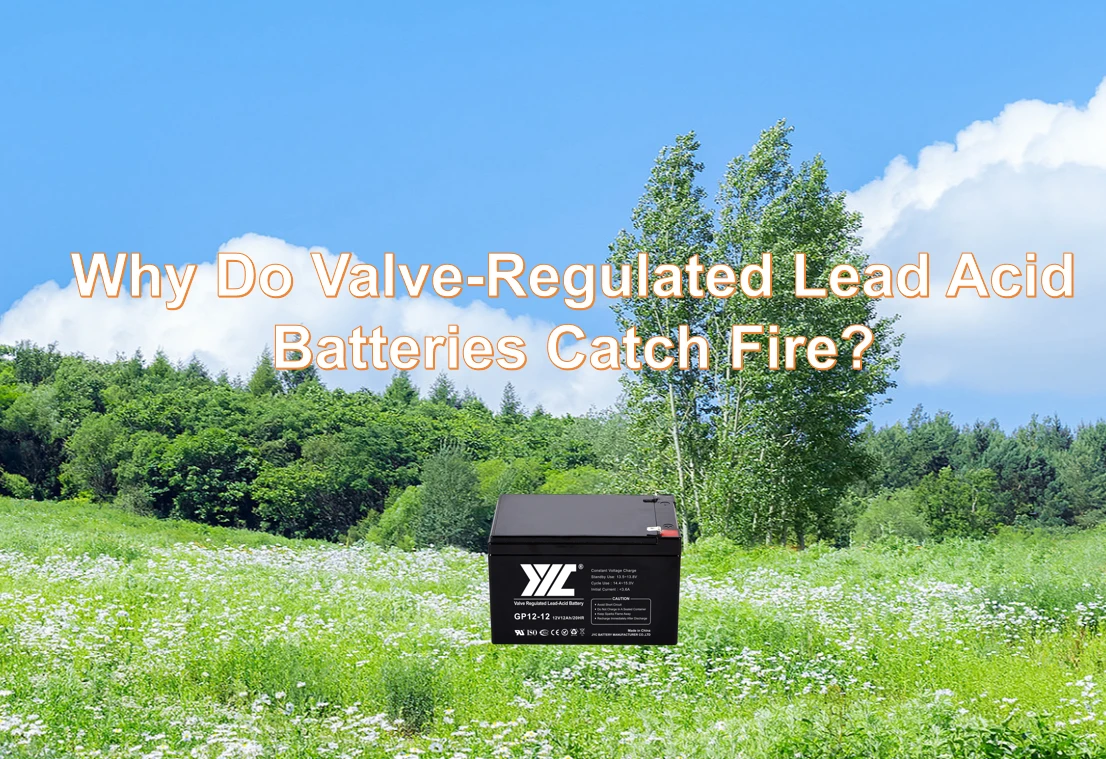
VRLA batteries are the most trustworthy and longest-lived battery options for applications from standby power systems through uninterruptible power supplies (UPS). Still, like any electrical device, VRLA batteries have inherent risks. In this article, we shed light on the chemistry of VRLA batteries and explore why these devices can sometimes catch fire.
Battery Chemistry and Fire Risk
To understand how VRLA batteries can actually catch fire, first, it helps to know its basic chemistry. A basic VRLA battery contains two lead-acid plates, one positive of lead dioxide and one negative plate of sponge lead immersed in an electrolyte solution mainly consisting of diluted sulfuric acid. During charge and discharge, chemical reactions supply electrochemical energy.
The thermal runaway phenomenon is the primary fire hazard in VRLA batteries. Thermal runaway occurs when heat from chemical reactions inside the battery exceeds its capacity to dissipate heat. This excess heat can be escalated into a cascade reaction that leads to fire.
How it can lead to fire initiation
Several factors initiate thermal runaway and, consequently, fire in VRLA batteries:
1. Overcharging or discharging
When charging a VRLA battery beyond its recommended voltage or excessively discharging to levels below that limit, the chemical reactions inside the VRLA battery become uncontrolled. Excess heat may result, consequently increasing the potential for thermal runaway.
2. High Temperatures
Increased ambient temperature would increase internal battery temperatures, raising fire risk from thermal runaway.
3. Manufacturing Defects
VRLA batteries are manufactured to extremely tight quality control levels, but manufacturing defects still happen. Materials mixtures of impurities can cause uneven reaction chemistry and increased fire risk from thermal runaway.
4. Physical Damage
The material that makes up a VRLA battery can be physically damaged. For example, a puncture or crack in the casing compromises integrity – interior components are now exposed to external exposure and increasing fire risk.
5. Aging and Degradation
All VRLA batteries degrade naturally over time. With age, degradation causes their capacity to decrease, increasing fire risk through thermal runaway. Good maintenance and monitoring enable aging batteries to be identified before they become fire hazards.
The Takeaway
While VRLA batteries sport many hallmarks that make for a reliable, long-term battery solution, they are not fire-proof. A solid grasp of how chemistry works with respect to batteries and factors that can cause ‘thermal runaway’ is crucial in preventing fires from happening at all. To reduce the likelihood of fire incidents, keep up with what manufacturers recommend, monitor health periodically, and follow proper care/handling/storage procedures.
JYC Your Reliable Choice for Valve Regulated Lead Acid Batteries
The VRLA batteries should only be the assured quality of JYC. Our batteries undergo strict quality control tests to assure safety and reliability. Aside from the value of your money, each JYC battery ensures your investment in a product guaranteed to minimize fire risk. Choose JYC Battery for every power need and feel the difference when it comes to performance and quality.
Although some fire risk is involved in using VRLA batteries, proper care, maintenance, and careful selection of a reliable manufacturer like JYC can reduce this substantially. Make an informed decision and prioritize safety when shopping for batteries for your applications.



